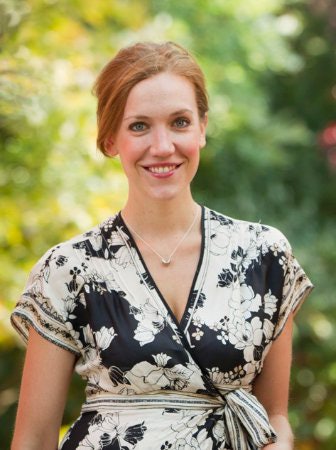A new report by the Aurora Institute, previously known as iNACOL, details the need for higher education institutions to create systematic changes within the teaching field.
Titled “Transforming Teaching: What University Presidents and Deans of Colleges of Education Need to Know about Modernizing the K-12 Educator Workforce,” recommends three main policy changes including the need to “diversify the workforce, modernize teacher preparation and promote continuous professional learning and development.”
 Dr. Katherine Casey
Dr. Katherine Casey“We know that one of the most important things we can do to improve the quality of public education across our country is to improve the quality, sustainability and livability of our teacher workforce,” said Dr. Katherine Casey, who is the author of the policy brief. “Teaching is a profession that compared to many others, has yet to evolve. Keeping in pace with the changes in the way students learn, changes in our educational reality and environment.”
According to the Aurora Institute, Black students who have one Black teacher by 3rd grade are 13% more likely to enroll in college. Those who have two Black teachers by 3rd grade are 32 percent more likely to enroll in college.
Students of color who are educated by teachers of color report higher rates of safety and belonging. Additionally, students of color who have teachers of color face lower rates of disciplinary action, the Aurora Institute reported.
“Schools are better and kids learn better when they are able to spend time with representative adults,” said Casey. “Diversifying the teacher workforce is both an ethical and a practical issue. Ethical because it aligns with values of equity and social and racial justice and practical because outcomes are better for kids. And yet, we see nationwide, very little change in the diversity of the teacher workforce.”
To increase diversity, the brief recommends that higher education institutions recruit potential teachers who hold different racial, cultural and religious backgrounds. Higher education leaders can also create a call to action to diversify the teaching workforce.
In order to provide more opportunities for underrepresented and low-income individuals, the brief also suggested that local school districts forge partnerships with higher education leaders.
Under this partnership, for example, both postsecondary and alternative pathways such as substitute teaching and para-professional opportunities can be created. Postsecondary pathways allows students in high school to take college-level courses for credit.
“It’s important for us to have culturally responsive learning environments,” said Susan Patrick, president and CEO of the Aurora Institute. “The lived experience of educators coming from diverse backgrounds and representing the diversity that our students have as well is critical.”
In terms of modernizing the teaching workforce, the brief emphasized the importance of using innovations to focus on student-centered learning and teaching.
Additionally, schools can also integrate adult learning with research and the learning science. This can include mentorship, residency with clinical practice, project-based and personalized learning, the brief stated.
 Susan Patrick
Susan PatrickFor continuous education learning and development, the brief recommends that higher education leaders work with state education agencies to develop multi-tiered systems of licensure and credentialing, offer opportunities for ongoing learning and micro credentialing through orientations and diversify programs to develop distributed leaders.
In addition to suggestions for higher education leaders, the brief also offers case studies to test out the theories, which focuses on implementing programs for competency-based learning and personalized learning environments. The case studies highlight the partnerships between Baltimore County Public Schools and Towson University; Southern New Hampshire and 2Revolutions; Virginia Department of Education and the College of William and Mary as well as the Dallas Independent School District.
According to Patrick, the goal for this report is that it will “ignite a challenge” for higher education leaders to transform the education system.
“We think that there are big opportunities so we would really like to see the presidents of universities and deans of these colleges of education recognize the role that they play in shaping K-12 education across the U.S. in state, in their communities,” said Patrick. “And that ultimately, the joint results of better aligning these systems will impact the outcome for students and the readiness for students that are going to come on their campuses and that are coming into our democratic society.”
Alongside this brief, the Aurora Institute also released two other reports that focused on challenging federal and state policymakers to change the K-12 system.
“My hope is that this brief contributes to a groundswell of interest and urgency around thinking very differently about teaching, not just teachers, but teaching as a profession and can elevate some very specific actions that higher education can take,” said Casey.
Sarah Wood can be reached at [email protected].





















